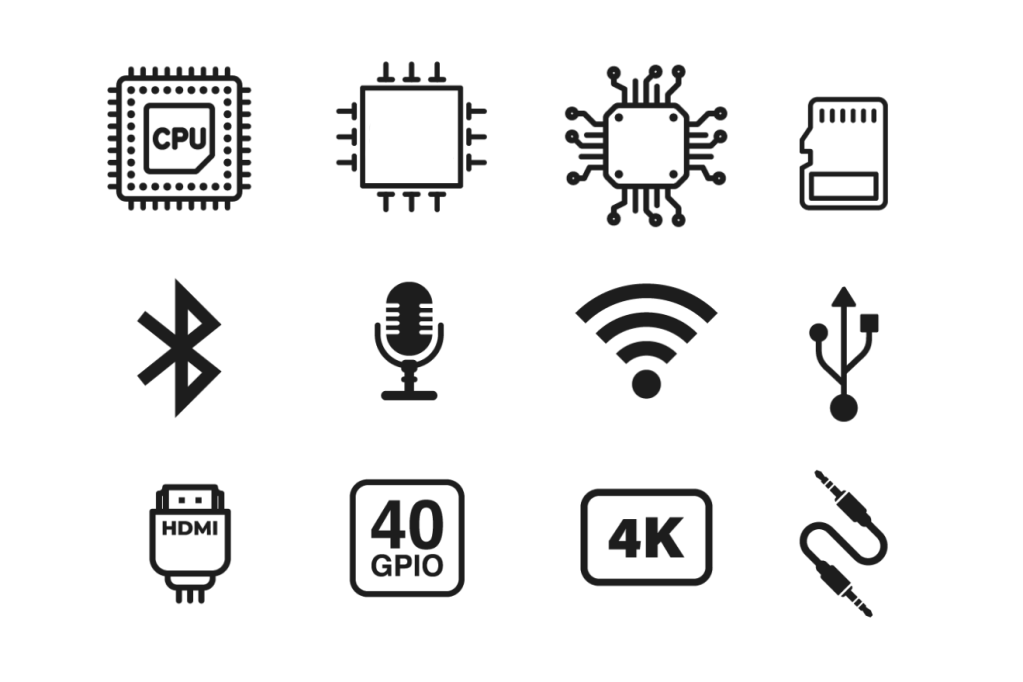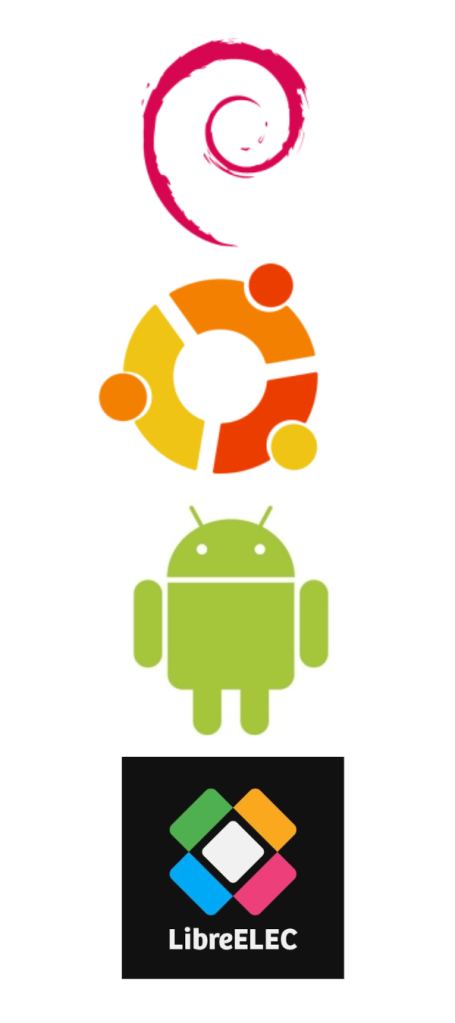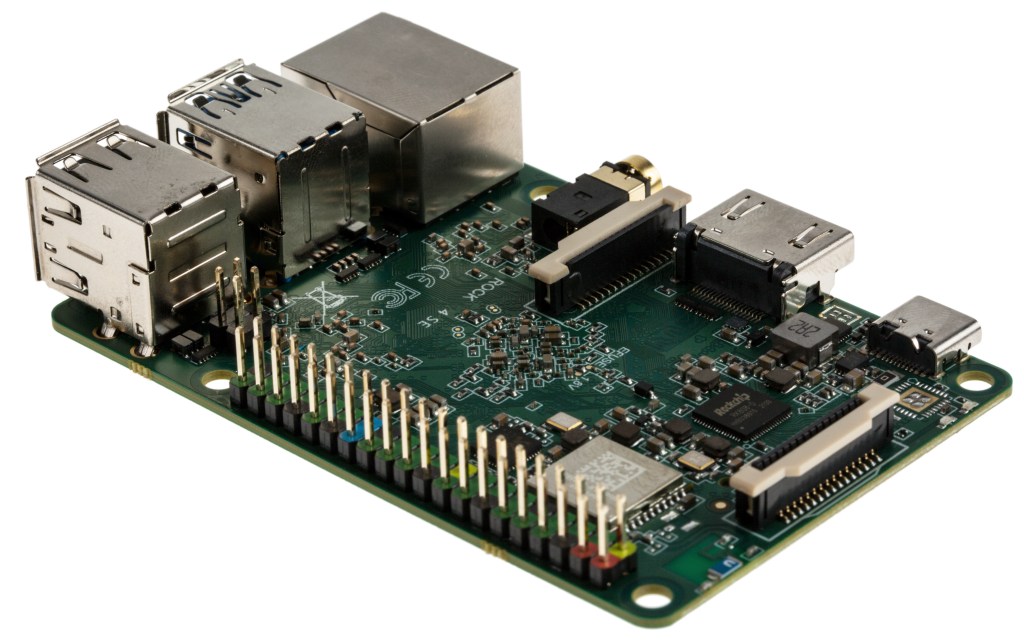By Peter Milne, engineer and Linux advocate with more SBCs than an Apollo 11 landing craft.

The ROCK 4C+ single-board computer is coming soon into our ROCK Shop at OKdo. As we’ve recently introduced the low-power, high-performing ROCK single-board computers (SBC) into our range at OKdo, we have spoken to Peter Milne, an independent freelance engineer who’s had a first look at the ROCK 4C+ board and shared his findings about the board’s hardware and software specifications.
It’s no secret that makers and professionals in the industry have been impacted by shortages of semiconductors; hence some manufacturers of single-board computers struggled with supply chain constraints and could not satisfy the rising market demand.
OKdo decided to tackle SBC shortages by bringing a flexible, new-to-market solution – the ROCK platforms, developed in collaboration with Radxa, formed with powerful hardware, as standard.
After we’ve recently met the special edition board, the ROCK 4 SE, we’re steadily approaching the launch of the next model, ROCK 4C+. It brings some incredible features packed in a compact board, ready to help you drive amazing industrial innovations.
Peter Milne had a first glance at the board and shared his findings about what gems are hidden on the board and what to expect from the ROCK 4C+ single-board computer. So, let’s dive into this engineer’s review of the technical features and capabilities of ROCK 4C+.


This is a technical user perspective review focused on the ROCK 4C+ single-board computer developed by OKdo in collaboration with Radxa. The board has many similarities with other popular boards on the market, including the Raspberry Pi 4 Model B, having the same form factor and similar hardware specifications.
In some areas, the ROCK 4 C+ SBC has some additional and superior features notable around storage options, as detailed below.
What are the hardware specifications of ROCK 4C+?
ROCK 4 Model C+ has a broadly similar hardware specification to the Raspberry Pi 4 Model B, making the ROCK 4C+ a great Raspberry Pi alternative. Both boards are of almost the same size and layout. This should make ROCK a physical drop-in replacement for the Raspberry Pi in most use cases. This doesn’t mean that they are direct replacements. The camera connectors are in different locations, and there may be differences in power consumption, software and firmware driver support on the ROCK.
Notable differences are (see table below):
- Processor – The ROCK 4C+ board has 6 cores, 2 Cortex®-A72 and 4 Cortex®-A53 – in some cases, may give better performance and lower power consumption than other existing alternatives on the market.
- Memory – ROCK 4C+ is initially available with 4GB SDRAM.
- Wireless – ROCK 4C+ has an external wireless antenna connector allowing more options for enclosures.
- USB OTG – ROCK 4C+ has true USB 3.0 OTG support.
- Storage – Storage – ROCK 4C+ has an SD card connector plus connectors for eMMC storage solutions giving ROCK a significant advantage in embedded designs due to the superior speed, reliability, capacity and durability of eMMC over SD cards.

Several features are only available on the ROCK 4C+ single-board computer:
- SPI Flash – Mounting pads for 32MB SPI flash chip for Network boot.
- On / Off button – a major benefit of this board, as powering off correctly is usually a huge issue with SD card storage to avoid software corruption.
- Fan header – dedicated support for cooling fans.
Hardware Specifications Comparison


| ROCK 4C+ | Raspberry 4 Model B | |
| Processor | Rockchip RK3399-T, Hexa-core 64-bit SOC – Dual Cortex®-A72, frequency 1.5GHz with quad Cortex®-A53, 1Ghz with separate NEON coprocessor | Broadcom BCM2711, Quad-core Cortex®-A72 (ARM v8) 64-bit SoC @ 1.5GHz |
| Memory | 4GB LPDDR4-3200 SDRAM | 1GB, 2GB, 4GB or 8GB LPDDR4-3200 SDRAM (depending on model) |
| GPU | Arm Mali™ T860MP4 GPU, OpenGL ES 1.1 /2.0 /3.0 /3.1 /3.2, Vulkan 1.0, Open CL 1.1 1.2, DX11. | OpenGL ES 3.1, Vulkan 1.0 |
| Wireless | 2.4 GHz and 5.0 GHz IEEE 802.11ac wireless, Bluetooth 5.0, BLE External uFL antenna connector | 2.4 GHz and 5.0 GHz IEEE 802.11ac wireless, Bluetooth 5.0, BLE |
| LAN | Gigabit Ethernet | Gigabit Ethernet |
| USB 3.0 | 1x USB 3.0 HOST x1 1x USB 3.0 OTG port | 2x USB 3.0 HOST ports |
| USB 2.0 | 2x USB HOST ports | 2x USB HOST ports |
| GPIO | 40 pin GPIO header | 40 pin GPIO header |
| HDMI | Micro HDMI 2.0 up to 4k@60 (Type D), H.265/VP9 (HEVC) hardware decode Micro HDMI 2.0 up to 2k@60 (Type D), H.264 hardware decode | 2 × micro-HDMI ports (up to 4kp60 supported) H.265 (4kp60 decode), H264 (1080p60 decode, 1080p30 encode) |
| Power | Power adapter with USB type C port minimum (5V3A) 15W | 5V DC via USB-C connector (minimum 3A) |
| Display MIPI DSI | MIPI DSI 4 lanes display via FPC connector Dual HDMI/HDMI2/MIPI DSI can work at the same time, supporting mirror or extended mode. | 2-lane MIPI DSI display port |
| Camera MIPI CSI | MIPI CSI 2 lanes via FPC connector, support up to 8MP camera | 2-lane MIPI CSI camera port support up to 12MP camera |
| Audio | Audio 3.5mm jack with microphone support HD codec that supports up to 24-bit/96kHz audio Output can drive 32Ω headphones directly | 4-pole stereo audio and composite video port |
| Power over Ethernet | Power over Ethernet (PoE) enabled header | Power over Ethernet (PoE) enabled header |
| USB Storage | uSD Storage Micro SD card slot supports up to 128GB uSD card | Micro-SD card slot for loading operating system and data storage |
| eMMC Storage | Optional industrial level high-performance eMMC module, 16G/32G/64G/128G available (click on module bottom side) | N/A |
| SPI Flash | SPI Flash (optional) 32Mb SPI flash can be mounted – Network boot via SPI supported – If the SPI flash is mounted, the DSI is still 4 lanes, but the SPI function on the 40P GPIO header will be occupied. | N/A |
| Power button | Power button | N/A |
| Fan Header | Dual pin PWM fan header (controller chip on board) | N/A |
| Dimensions | 85mm x 54mm | 85mm x 56mm |
What operating systems are supported on ROCK 4C+?
Operating system comparison
| ROCK 4C+ | Raspberry 4 Model B |
| Debian Desktop | Debian Bullseye Desktop & server |
| Ubuntu Server | Ubuntu 20.04 Server Desktop Core |
| Android | Not officially supported |
| LibreELEC | LibreELEC |

The ROCK 4C+ Strengths
- Hexa-core Arm-based processor – can offer faster performance than other popular boards on the market
- Compatibility with a wide range of existing SBC products and accessories on the market (cases and HATs)
- Superior storage options – uSD and eMMC
- Choice of 64-bit Linux operating systems plus support for Android
- Documentation Wiki in English / German / Spanish / Portuguese / Chinese
- Active community forum and Discord channel
- Open-Source software via GitHub
- Supports Android
- Extra features (On / Off button / SPI flash pads / Fan header).
Conclusion
In conclusion, having reviewed the ROCK 4C+, I can say it is a fast board with many positives, including a Hexa-core processor, light, fast and responsive desktop, external antenna, on/off button, eMMC storage option, great YouTube performance, minimal pre-installed software (I prefer this but it doesn’t suit everyone) and SSH enabled by default.



ROCK Shop
Are you excited to learn more about the ROCK platforms? Discover everything you need to know about ROCK here.

